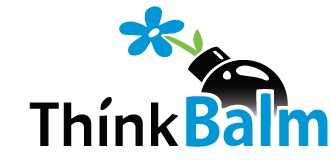- in Blog Articles by Erica Driver
Highlights from “Learning in 3D” book: steps to successful adoption
Karl Kapp, professor and consultant at Bloomsburg University, and Tony O’Driscoll, professor of the practice at Duke University, have a new book out titled Learning in 3D: Adding a New Dimension to Enterprise Learning and Collaboration. ThinkBalm contributed an essay to Chapter 8, which is all about steps to successful enterprise adoption. We’d like to call out and comment on a few points from this chapter.
First: mainstream adoption is not a matter of if, but when. Kapp and O’Driscoll write, “There was a time when computers themselves were thought of as toys or novelties; now these devices are indispensable business and education tools. There was a time when the Internet was not a part of our daily lives. It’s hard to reach back and remember the time before these technologies became ubiquitous — when the same type of implementation and adoption concerns existed for those technologies [as for the Immersive Internet].” ThinkBalm’s prediction is that in three years’ time, adoption of immersive software in the workplace will have reached the early majority adoption phase. (See the November, 2008 ThinkBalm report, The Immersive Internet: Make Tactical Moves Today for Strategic Advantage Tomorrow). To be sure, the path to mainstream adoption is marked by barriers — but early adopters are finding springboards for overcoming hurdles. (See the September, 2009 ThinkBalm report, Crossing the Chasm, One Implementation at a Time.)
Second, Kapp and O’Driscoll offer great advice to early adopters in this chapter and we’d like to call out a couple of highlights:
- Focus on compatibility with existing technology and modes of work. In a discussion about how to make immersive technologies attractive to target stakeholders and users, Kapp and O’Driscoll say, “Positioning virtual immersive environments as a natural extension and convergence of existing technologies such as synchronous learning tools, video games, Web 2.0, and social networking — and not as a science-fiction-dream-come-to-life will go a long way toward the concept of compatibility.” Think of immersive software for meetings or learning and training as expansions of the worker’s toolkit. Immersive software will extend the reach of current investments with new features and functionality. One of the ways this will occur is through integration with existing communication and collaboration tools. (See the January 6, 2010 ThinkBalm blog post, “Immersive software for meetings will expand the information worker toolkit.”)
- Choose the right group of people to participate in a pilot. An immersive software pilot project is a test run during which people conduct real business activities in the environment and report feedback about their experiences to the project team. Kapp and O’Driscoll offer good advice about how to assemble the right pilot group. They recommend choosing a relatively small group; creating a mix of people who are comfortable with technology and those who are less comfortable; involving people from IT as well as legal and regulatory departments from the beginning; selecting people who are interested in the potential of virtual worlds; and focusing on people who will be willing to share their feedback with the project team.
This blog post is part of the Learning in 3D blog book tour. Book publisher Wiley is offering a 20% discount to blog book tour attendees. There will also be a book summary published very soon, which I recommend for further reading.
